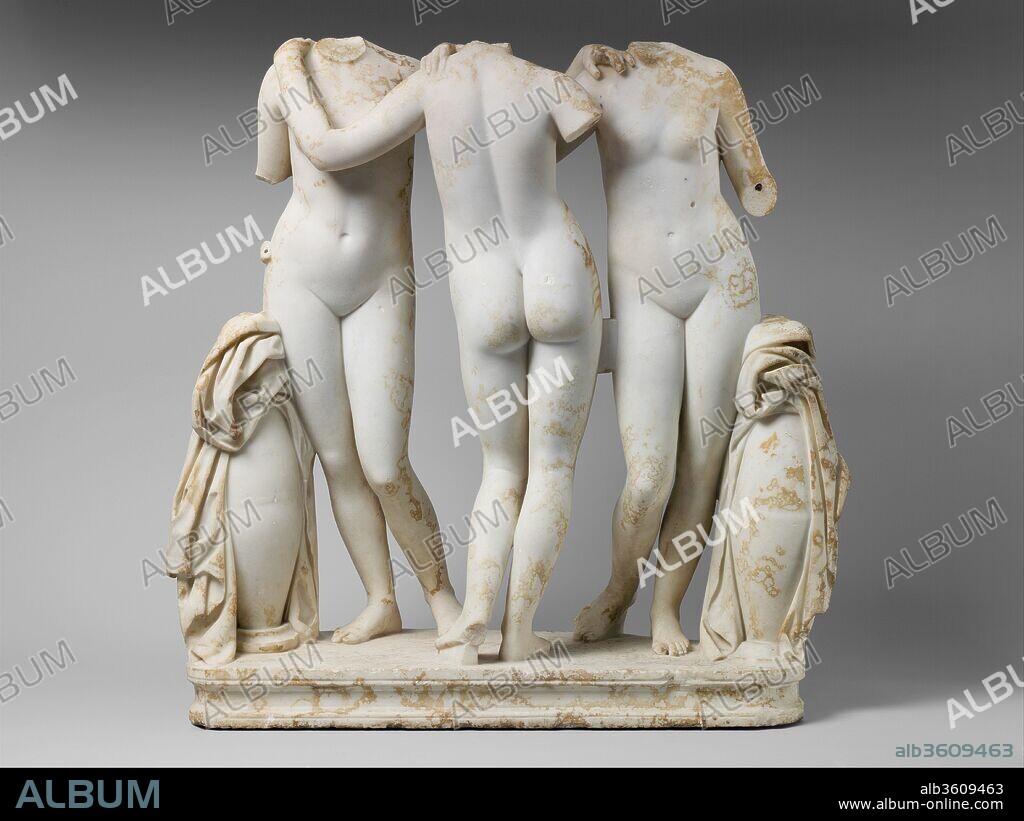alb3609463
Marble Statue Group of the Three Graces

|
Zu einem anderen Lightbox hinzufügen |
|
Zu einem anderen Lightbox hinzufügen |



Haben Sie bereits ein Konto? Anmelden
Sie haben kein Konto? Registrieren
Dieses Bild kaufen

Titel:
Marble Statue Group of the Three Graces
Untertitel:
Siehe automatische Übersetzung
Marble Statue Group of the Three Graces. Culture: Roman. Dimensions: Overall: 48 7/16 x 39 3/8in. (123 x 100cm). Date: 2nd century A.D..
Roman copy of a Greek work of the 2nd century B.C.
These young girls, linked in a dance-like pose, represent The Three Graces: Aglaia (Beauty), Euphrosyne (Mirth), and Thalia (Abundance). They bestow what is most pleasurable and beneficent in nature and society: fertility and growth, beauty in the arts, harmonious reciprocity between men. They enjoyed venerable cults in Greece and Asia Minor. In mythology, they play an attendant role, gracing festivals and organizing dances. Their closest connection is with Aphrodite, whom they serve as handmaidens.
This carefully calculated, frieze-like composition is typical of classicizing art of the second and first centuries B.C. Instantly recognizable, it soon became the canonic formula for representing the Graces, who appeared in every medium and on every kind of object, from mirrors to sarcophagi.
Reportage:
Technik/Material:
MARMOL
Zeitraum:
imperial
Museum:
Metropolitan Museum of Art, New York, USA
Standort:
ROMAN EMPIRE
Bildnachweis:
Album / Metropolitan Museum of Art, NY
Freigaben (Releases):
Model: Nein - Eigentum: Nein
Rechtefragen?
Rechtefragen?
Bildgröße:
4282 x 3212 px | 39.3 MB
Druckgröße:
36.3 x 27.2 cm | 14.3 x 10.7 in (300 dpi)
Schlüsselwörter:
 Pinterest
Pinterest Twitter
Twitter Facebook
Facebook Link kopieren
Link kopieren Email
Email
